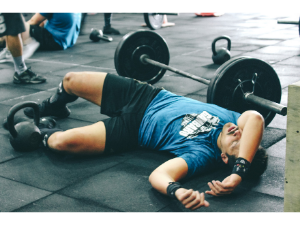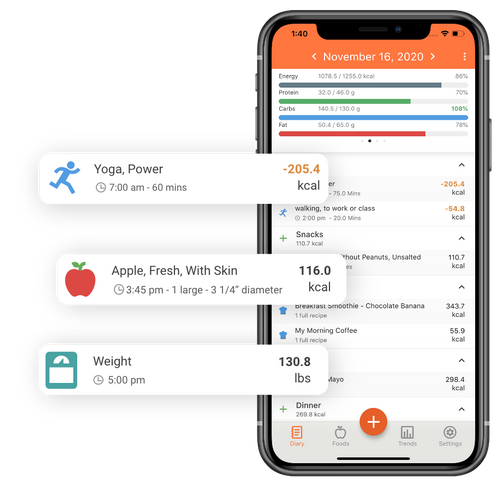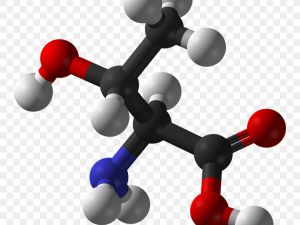Reverse dieting: Why you don’t (necessarily) have to eat less in order to lose weight
 The conventional wisdom says that if you want to lose weight, you need to eat less. Basic physics, right? If you consume more calories than you burn, you gain weight, and vice versa to lose weight. The simple formula goes something like “calories in, calories out”, or “CICO”. The idea being that if we burn more calories than we take in, we lose weight. If we eat more than we burn, then we gain weight.
The conventional wisdom says that if you want to lose weight, you need to eat less. Basic physics, right? If you consume more calories than you burn, you gain weight, and vice versa to lose weight. The simple formula goes something like “calories in, calories out”, or “CICO”. The idea being that if we burn more calories than we take in, we lose weight. If we eat more than we burn, then we gain weight.
In a perfectly closed, tightly controlled system, that would be true. But the human body is not one of those systems. We have varying energy requirements, body compositions, exercise levels, and food consumption. All these will affect CICO. A more correct formula would be “CACB”, or “calories absorbed, calories burned”.
Eating less (lowering caloric intake) paired with extensive cardio exercise (increasing caloric output) works for bodybuilders who are drastically (and temporarily) getting as lean as possible before a competition. It does not work for the rest of us who are trying to set long-term, sustainable body composition improvements. And when those competitors do go back to their normal muscle-building eating habits, they gradually increase caloric intake (and shift from high cardio to high strength training) over a period, to allow their metabolisms to adjust and keep up with the additional calories.
They generally do not shoot right back up to their previous caloric intake levels – as might happen with a person who is following a restrictive diet for several weeks or months, and then abruptly goes back to previous eating habits after losing a few pounds, which often results in gaining fat (that is how we store most of our energy).
This gradual increase in calories is often referred to as “reverse dieting”. The idea is to maintain calories at the point where energy levels are good, performance is high, and muscle mass is being gained (with minimal fat gain).
Reverse Dieting
Reverse dieting works with our metabolism, not against it, and can help with different conditions and goals.
-
If someone wants to eat more without gaining weight or losing muscle mass, then boosting their metabolism will help with that.
-
If someone has tried dropping calories, but is not losing weight, then reverse dieting can kick-start the stalled metabolism and get it burning more calories.
-
“I want to get jacked and see some abs”. Well, yes, it can help with that too – provided sufficient and focused exercise goes along with it.
When a person follows a calorie-restrictive diet, they lose stored energy (from both fat loss and muscle loss). This reduced energy demand slows the metabolism – our bodies like to maintain balance. So, if we eat less to lose five pounds, once we’ve lost it and our bodies re-establish that energy balance, we will then have to drop our calorie intake even more to lose the next five pounds. You can see where this is ultimately going. It is commonly called “starvation”.
When we eat less food, our body adjusts to the lower energy intake by:
- Using less energy during exercise – our bodies have less mass to move around, and since we need to use the energy we have as efficiently as possible, energy output drops. Performance suffers. What exercise we can manage becomes more difficult.
- Reducing non-exercise activity, like walking, carrying groceries, moving around the house – everyday movement that adds up to most of our energy expenditure over the course of the day.
- Our digestion will slow down to extract as many nutrients out of our food as possible.
- The energy we use when “at rest” (referred to as BMR, or Basal Metabolic Rate) decrease. The body’s cellular functions and autonomic functions require energy to maintain. This also includes a major energy consumer – our brains. Our thinking is affected just as much as our muscles are when our caloric intake is too low.

A 150-pound person who has lost 25 pounds to achieve that weight needs 5-15% fewer calories to maintain that weight than a person who has been at 150 pounds for a long period of time. This is because the metabolism of the later person has had time to adjust.
By adding calories in gradual, small increments, our systems will adapt by increasing energy output. We will expend more calories when at rest, as BMR increases. We can workout longer and harder, thus increasing energy output. Our everyday activity uses more energy. Digestion improves (and moves) because the system does not have to hold on to every morsel for as long as possible.
But we must get there slowly. We cannot eat 1500 calories a day for a week and then 2500 a day the next week and expect efficient adaptation. An increase of approximately 20% (say 1800 calories to 2160) may trigger adaptation without significant increases in body fat.
Adding 20% to your daily calories is not an easy thing to do for most people. That pint of ice cream, while having plenty of calories, is not a very nutritional source, especially from a nutrient perspective. Also, if we have been restricting calories (i.e., dieting) for 3 or 4 months, it might very well take us an equal amount of time to get back to baseline before we can effectively use reverse dieting.
And as with everything, your results may vary. Age, current eating habits, daily activity levels and more can all effect how much and how quickly someone will adapt to the caloric increase. It requires measuring and monitoring food intake, modifying exercise and activity levels, and the knowledge that it may not have a discernible effect at all.
NOTE: If your food habits do not already mainly consist of high quality, whole foods, then that should be achieved before attempting any kind of caloric modification program. Lay the foundation first, then attempt to build on it afterwards.
How to start Reverse Dieting
 1) Start by knowing how much you are currently eating at the caloric and or macronutrient level. This requires tracking your food intake. Here are two methods of food tracking:
1) Start by knowing how much you are currently eating at the caloric and or macronutrient level. This requires tracking your food intake. Here are two methods of food tracking:
- Calorie/macro tracking: calculating calorie and macro totals for each meal
- Pros: can be very precise, there are apps (My Fitness Pal, Cronometer) and websites available to do the work for you
- Cons: time consuming, labor intensive, the level of precision may not be necessary for most non-competitors
- Hand portion tracking: based on the estimated volume of food
- Pros: easy and fast to do
- Cons: not as accurate as calorie/macro tracking (but it is accurate enough for most of us)
2) Calculate your caloric needs to maintain your current weight
Once you have the calculation, try it for two to four weeks while monitoring your body weight to see how it responds. For a free, personalized report with macro/calorie reccomendations for your maintenance level, click here and select “Improve Health” as the goal.
3) Set your macronutrient ratios.
Balance between carbs and fats based on your preferences. If you are very active and/or exercising regularly at high intensity, make sure you have enough carbs to fuel yourself through the day. Make sure protein is high enough – this is crucial to maintaining/adding muscle mass. Protein also requires more energy to process than fat or carbs, so a high-protein diet helps energy output. Use the following guide for determining protein intake:
Women: 0.6 to 1.35 grams of protein per pound of body weight
Men: 0.65 to 1.5 grams of protein per pound of body weight
For persons trying to max out lean body mass, use the upper ranges of those recommendations.
4) Decide how fast you want to go, and what your goals are.
Are you recovering from a dieting period? Do you want to achieve peak physical performance? Do you need to build both muscle and fat? All these will affect the rate of required caloric increase.
5) Track, monitor, and adjust.
Weigh yourself weekly (daily might be overkill). Measure your waist, hips, and any other body areas that will indicate progress. Keep a record of before, during, and after photos. Keep a record of how you feel and perform during and after workouts. A journal noting general energy levels, hunger during the day, and digestive function will also help to keep on top of your metabolic response.
You may find you can increase intake consistently. Or maybe you need to increase at a slower pace. Adjust continually as the data comes in, either up or down. Subjective data (how you feel) is as important as objective data (how much you weigh, your waist measurement).
How long should the reverse dieting last? That is up to you. If you’ve gained/maintained muscle without too much fat gain, have been reverse dieting for a lesser period than you were restricting calories, or still feel good about adding calories, then keep it up.
If you feel you have gained as much fat as you are comfortable with, you feel the current eating requirements are not maintainable, or you have surpassed the amount of time you were in a deficit, then maybe the reverse diet has served its purpose.
Finally, keep in mind that reverse dieting is not intended to be a lifestyle – just an adjustment period. Once you have achieved the goals you set when starting the process, you can then decide on the eating habits that will consistently help you maintain your optimal health.
Share this article on your social media
Print
Published on March 4, 2021.


